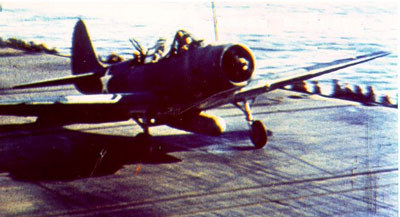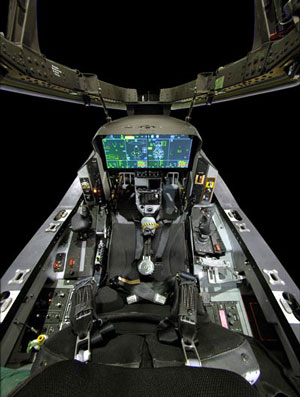
By Ed Timperlake
Former Commanding Officer, VMFA-321 “Hell’s Angels”

From WWII To the Jet Age : Get First “Tally” Via Speed, Range, Maneuverability… and Armor
In the opening days of US combat in World War II, extremely courageous Navy and Marine pilots went up against the Imperial Japanese Navy in inferior aircraft. For the Marines, the F2A Brewster Buffalo was woefully inadequate at the Battle of Midway and an entire Navy torpedo squadron, Torpedo-8 except for a single pilot, was killed in combat.
With the entire world in combat and nations fighting for their very existence, aircraft design teams pressed ahead with all the resources and intellectual vision they could bring to the design table. What the U.S. air forces introduced during those years was a steady introduction of type, model, and series (T/M/S) of always improving airborne killing machines.
From the F2-A Brewster Buffalo to the F-4F and F-4U to the F-6 and at wars end, the F-8 Bearcat the Navy had a series of prop driven Fighters that mastered the Japanese Zero. The Army Air Corps went from P-39 to P-38 Lighting, P-47 Thunderbolt to the P-51 Mustang with its wonderful bubble canopy to carry the fight to the heart of Germany.
Along the way emphasis was placed on pilot survivability by putting armor plates in the cockpit and having self-sealing fuel tanks. Since the entire objective was to get first “tally” and then out maneuver the enemy to kill him, the total design focus was to always improve a blend of speed, range, and maneuverability—better engines and smarter airframe designs.
Of course, while the main effort was producing enough “motors and gun sights,” industry and research lab efforts were underway to change yet again the technology of the air figh.
The P-61 “Black Widow” was an early attempt to put radar on a night fighter, and the Germans tried a rocket plane against B-17 formations. The Italians Germans, Brits and, ultimately, Americans experimented with early jet engines. The German ME-262 changed the dynamics of combat. Although, the Germans employed it in an inefficient manner in following Hitler’s call for it to be committed to an air to ground role.
The Jet Age and The Introduction of Electronic Warfare
After WWII, the jet engines started the same dynamic seen in the prop years –improved airframe system performance by improving speed, range and maneuverability. But two new dynamics were added both related to “payload”.
For a fighter in WWII, the “payload” was simple –what caliber and how many machine guns or cannons fit the design to give the pilot enough “deadly bursts” to kill several of his opponents. In the jet age, the complexities of adding airborne systems and improving the weapons carried, changed the technology vectors of design considerations and introduced two more synergistic, but relatively independent research and development paths.
Airborne radar and sensors were added to fighters and those systems helped the payload—guns and early IR fire and forget missiles became more efficient with the AIM 9 sidewinder series. But then, concurrently, independent performance was put into the payload by improving missiles and linking long-range (BVR) missile shots to radar technology. At first, radar guided missiles needed continuous guidance from the fighter but eventually even radar guided missiles became BVR self-contained “fire and forget.”
So unlike WWII research and development, where research on airframes and engines was the mantra, in the jet age there were two other huge design factors at work. The first was always questing to improve the radar systems in the fighters and, secondly, as technology allowed independent designs could improve the weapons carried. Yet again, the art of aeronautical design had to work in partnership with the science of military R&D.
Along the way survivability shifted from armor, speed, and focusing on a good canopy into the era of Electronic Warfare and now the incorporation of stealth characteristics through both design considerations, composite materials and the wonders of chemistry for paint.
Stealth is a survivability factor and is critically important because it multiplies the effectiveness of the fighter—one doesn’t add stealth but incorporates it into the very existence of the fighter. Being a multiplying factor means it is sensitive and can really drive the entire performance of the airframe and system combat performance.
So ending the 20th Century the complexities of fielding the best fighter was a much bigger challenge because of three synergistic but independent factors–basic airframe performance improvements, internal system R&D and constantly improving weapons.
The XXIst Century Man-Machine Revolution: A New Distributed Information Capability and a Potential Spiral Development Design Process
However, with the very real computer revolution moving with light speed into the 21st Century there is now a forth design dynamic at work —the man-machine interface.
With the very real capability of three dimensional sensing and being able to distribute information to other warfighers, airborne and on the ground or at sea the relationship of the individual pilot to knowledge of the bigger air battle is truly revolutionary—this is brand new and to undergo further developments.
For example one of the most important capabilities of the F-35B not yet exploited is the distributed information capability. The least experienced fighter pilot to the most experience all flying into the air battle in yet to be developed formations are all equally capable of having the same knowledge and situational awareness.
Consequently in the formation if one pilot gets inside the opponents OODA loop (observe orient decide act) all are capable of having that same joint knowledge. The revolutionary point is the enemy can splash an individual F-35B, but cannot kill the knowledge gained by all: that aspect of modern warfare is truly unique 21st Century technology brought to an air battle.
Conversely, on the offensive if one F-35B picks up an enemies airborne vulnerability such as an aircraft system or weapon frequency emission or stealth breakdown it can be sent to all. Thus, another unique aspect of F-35B 21st Century capabilities is that every Lightning II is a real time intelligence collection system. The entire engagement is also captured electronically for immediate and direct refinements to tactics and analysis at the Marine Air Weapons Training Squadron during the air battle.
Fleet wide information sharing among services and allies may be a huge factor in winning an air campaign.
Photo Credit: The F-35 Cockpit, Lockheed Martin, 2010
as published by www.airforce-technology.com
The least experienced fighter pilot to the most experience
all flying into the air battle in yet to be developed formations
are all equally capable of having the same knowledge and situational awareness.
Consequently in the formation if one pilot gets inside the opponents OODA loop (observe orient decide act),
all are capable of having that same joint knowledge.
The revolutionary point is the enemy can splash an individual F-35B,
but cannot kill the knowledge gained by all:
that aspect of modern warfare is truly unique 21st Century technology brought to an air battle.
So in WWII the Buffalo was a “grape” and the design teams worked with wartime efficiency to follow a single path to improve airframe performance. After WWII the technology vectors of improving internal systems and weapons carried were added to the mix. Finally, in this new century the concept of each pilot being a three dimensional warrior with superior knowledge will be pioneered by the USMC aviation community.
The F-35 is not designed for the early century’s concept of the knife fight; and it has the growth potential for internal changes to its systems to always incorporate the best weapons while expanding empowerment of combat pilots to have three-dimensional knowledge to elevate the fight to a new level.
In other words, the F-35 may actually be its own follow-on. Instead of the old paradigm of needing to completely build another fighter to move from the F-2A “grape” to F-4U “Whistling Death,” the Marines can just change and update the F-35B system, sensors and weapons. The Marines flying the F-35B with a pre-planned product improvement design philosophy to pull and replace or add system capabilities will in the future have total flexibility to add new sensors and improved AA missiles currently being designed.
Evolving concepts of USMC operational development is at chapter one, because recognizing and exploiting man-machine three-dimensional knowledge is truly a brave new world. Consequently, the F-35B is capable of constantly updating the next generation of U.S. fighters but not by building a new airframe but staying inside the F-35B basic airframe and adding the next generation of systems and weapons
The learning curve to improve sensors, system capability and weapons carried quickly compared to building another airframe may be a new American way of industrial surging. The American arsenal of democracy may be shifting from an industrial production line to a clean room and a computer lab as key shapers of competitive advantage.
It is a bold concept and only history will tell us if that is the best way ahead. And I haven’t even touched on the USMC combat flexibility of basing mode with V/STOL-which, as General Walsh has discussed in his interview on this website , adds an entire capability for the integrated air-ground battle.
————-
*** Posted on April 29th, 2010




